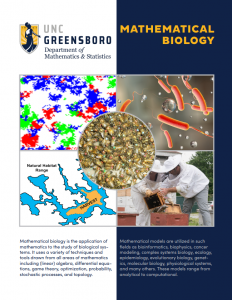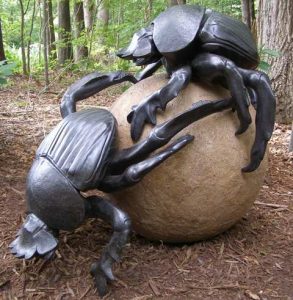Research: Mathematical Biology
About Mathematical Biology
Mathematical biology is an interdisciplinary discipline where research work in mathematics finds a wide range of applications in biology, medicine and biotechnology. The focus of our group is on modeling of biological processes, using a variety of applied mathematical and statistical techniques and tools.
Modeling is a beautiful area of research that lies somewhere between an art and science. A typical modeler’s project is as follows:
- take a complex biological phenomena (spend hours talking to biologists trying to understand their jargon)
- simplify it to the most fundamental core (spend hours talking to biologists trying to convince them that what they seem to be concentrating on are just secondary details)
- rewrite it into mathematical symbols, formulas and equations (finally alone for a while)
- solve the math problem (alone, starting to miss that biologist)
- interpret the math solution back into the biology (spend hours talking to biologist trying to teach him the math jargon)
- return to step 2 or 3 whenever math does not agree with biological experiments (since animals do not know any higher math, this happens quite often)
- at the end come to something that is so beautiful, yet so simple and obvious that you wonder why you did not come up with it right away.
Although math biology is a highly applied area of mathematics, a deep knowledge and understanding of pure math is needed and often required in order to come up with a sufficiently good math model. There are no boundaries or limits. ODEs and PDEs are the most classical models, but many models have been done using stochastic processes (and probability in general), topology, discrete math, combinatorics or geometry.
Math models tacked by the members of this group tried to answer questions like

- Why do honey bee queens (females) mate with many drones (males) and the males are even helping them in that behavior, yet bumble bee queens mate mostly with one drone only?
- Why did stealing behavior evolve (for example among sea gulls, or dung beetles) and why is there sometimes a lack of any defense against the stealing?
- How does structure of a population influence the evolution?





